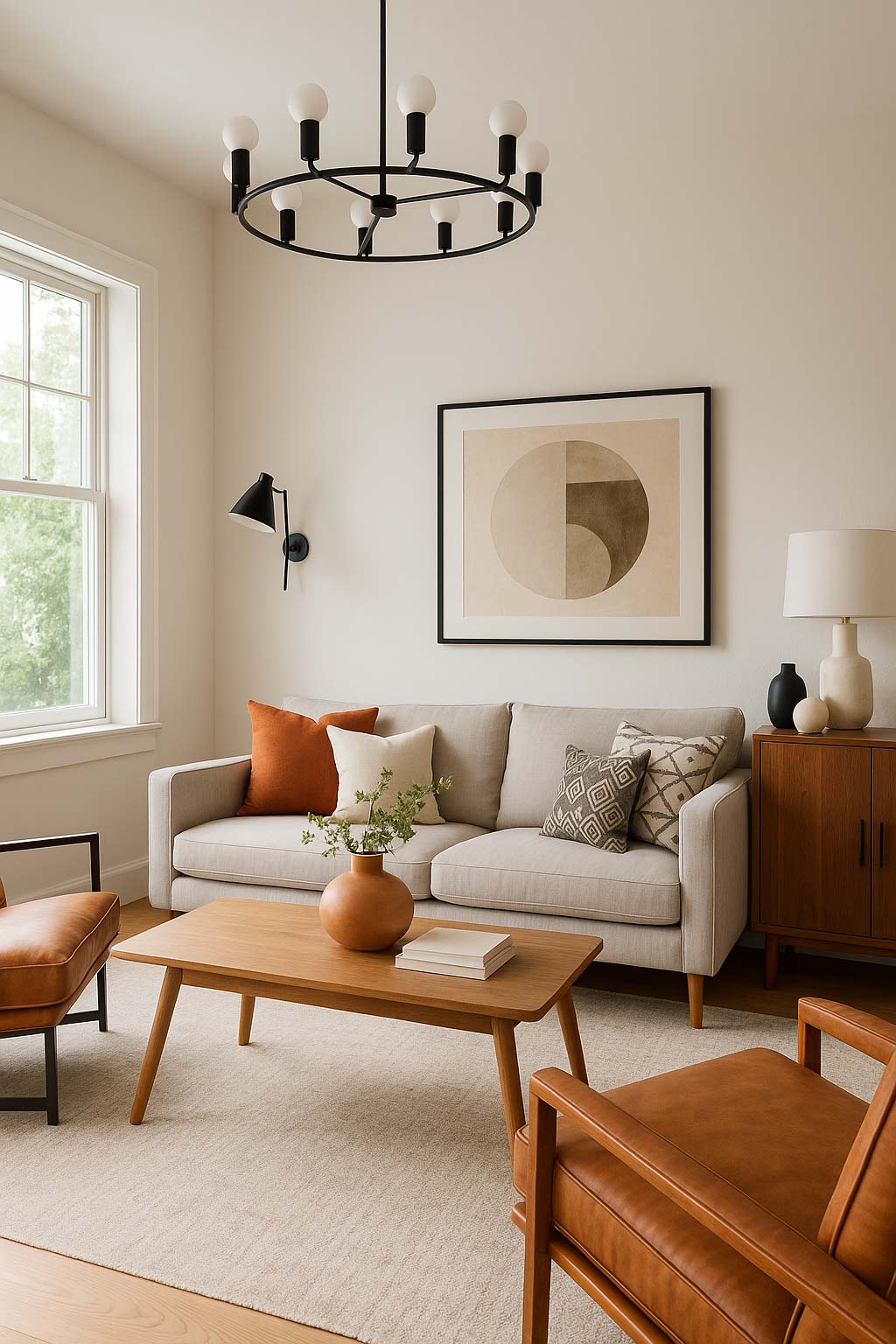10 Timeless Interior Design Principles That Will Transform Your Home Forever
Introduction
Designing a home transcends mere aesthetics; it’s about crafting a space that resonates with your personality, supports your lifestyle, and stands the test of time. While trends come and go, certain interior design principles remain evergreen, ensuring your home remains both stylish and functional for years to come. Let’s delve into these enduring principles that can transform any space into a timeless sanctuary.
1. Balance: Achieving Visual Harmony
Balance in interior design ensures that no single element overpowers another, creating a sense of equilibrium. There are three types:
-
Symmetrical Balance: Mirroring elements on either side of a central axis, often found in traditional interiors.
-
Asymmetrical Balance: Using different objects of equal visual weight to create a dynamic yet balanced space.
-
Radial Balance: Arranging elements around a central focal point, like chairs around a round table.
Achieving the right balance brings stability and comfort to a room.
2. Scale and Proportion: Ensuring Cohesiveness
Scale refers to the size of objects in a space, while proportion relates to how these objects relate to each other. For instance, a large sofa in a small room can feel overwhelming. Maintaining appropriate scale and proportion ensures that all elements in a room feel cohesive and harmonious.
3. Color Harmony: Setting the Mood
Color profoundly impacts the mood and perception of a space. Harmonious color schemes create a unified look, while contrasting colors can add vibrancy. Consider the 60-30-10 rule: 60% dominant color, 30% secondary color, and 10% accent color. This balance ensures a cohesive and visually appealing palette.
4. Rhythm: Creating Visual Flow
Rhythm in design guides the eye through a space, creating a sense of movement. This can be achieved through repetition of patterns, colors, or textures. For example, using a recurring motif in cushions, rugs, and artwork can tie a room together, leading the eye seamlessly from one element to the next.
5. Emphasis: Highlighting Focal Points
Every room benefits from a focal point—a feature that draws attention. This could be a fireplace, a piece of art, or a statement piece of furniture. Once established, other elements in the room should complement and enhance this focal point, ensuring it stands out without overwhelming the space.
6. Contrast: Adding Depth and Interest
Contrast adds visual interest and depth to a room. This can be achieved by juxtaposing different colors, textures, or shapes. For instance, pairing a sleek, modern table with rustic chairs creates a compelling contrast that adds character to the space.
7. Unity: Ensuring Cohesive Design
Unity ensures that all elements in a room work together to create a cohesive look. This doesn’t mean everything must match, but rather that there’s a consistent theme or style. Using complementary colors, consistent materials, or a unifying motif can achieve this sense of harmony.
8. Functionality: Prioritizing Practicality
A beautifully designed room must also be functional. Consider the room’s purpose and ensure that the layout, furniture, and accessories support its intended use. For example, in a living room, seating should facilitate conversation, while in a home office, lighting and desk placement are crucial for productivity.
9. Lighting: Enhancing Ambiance and Function
Lighting plays a pivotal role in both the functionality and ambiance of a space. Layered lighting—combining ambient, task, and accent lighting—allows for flexibility and mood setting. Natural light should be maximized, while artificial lighting should be adjustable to cater to different needs and times of day.
10. Personalization: Reflecting Individual Style
Your home should be a reflection of your personality and experiences. Incorporate personal touches like family heirlooms, travel souvenirs, or artwork that resonates with you. These elements add uniqueness and warmth, making the space truly yours.
Conclusion
Embracing these timeless interior design principles ensures that your home remains both beautiful and functional, regardless of changing trends. By focusing on balance, harmony, and personal expression, you can create spaces that not only look good but also feel right. Ready to transform your home? Start with these principles, and watch your space evolve into a timeless haven.


